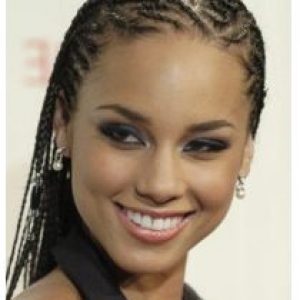
How we style our hair can be an extension of our personality and creativity. What hairstyle we choose can also impact how much hair we have.
Tight ponytails, braids and extensions all have one thing in common. They put tension on our roots. Regular pressure on the same areas over an extended period of time can lead to damage as well as hair loss6. This is referred to as traction alopecia1. Patchy hair loss, especially along the hair line and raised scalp skin are possible indicators of traction alopecia2. Through understanding what leads to traction alopecia, you can prevent it from happening3.
Hair extensions can also increase the risk of developing traction alopecia as they add weight and ultimately increase the pressure pulling at your roots4. Dreadlocks, a more permanent hairstyle, can result in tension extended over a long period of time, continuously pulling hair in one direction. This can increase your risk of traction alopecia1. Straightening may lead to traction alopecia as well. Overheated follicles weaken the hair shaft, with breakage occurring when traction is applied1.
Using chemicals, to induce a particular hairstyle, can also lead to traction alopecia. Traction alopecia is more common in women with relaxed hair than those with untreated hair4. Chemically treating your hair, breaks bonds within the hair shaft5. It is that bond breakage that allows for relaxers to give their desired straightening effect5. Weakening the hair shaft through bond breaking can increase the risk of damage to the hair follicle. Traction alopecia could occur when chemical over processing is combined with a tight braid or twist.
What hairstyles are safe? Leaving your hair down or in a loose ponytail are some safer hairstyling options. Symptoms of traction alopecia can sometimes appear similar to other conditions including alopecia areata and temporal triangular alopecia. Therefore when seeking treatment for your hair loss, be sure to describe your regular styling routine to your hair care professional1.
Article by: Sarah Versteeg MSc, Mediprobe Research Inc.
- Ozçelik D. Extensive traction alopecia attributable to ponytail hairstyle and its treatment with hair transplantation. Aesthetic Plast Surg. 2005 Aug;29(4):325–7.
- Haskin A, Aguh C. All hairstyles are not created equal: What the dermatologist needs to know about black hairstyling practices and the risk of traction alopecia (TA). J Am Acad Dermatol. 2016 Apr 21;
- Mirmirani P, Khumalo NP. Traction alopecia: how to translate study data for public education–closing the KAP gap? Dermatol Clin. 2014 Apr;32(2):153–61.
- Samrao A, Price VH, Zedek D, Mirmirani P. The “Fringe Sign” – A useful clinical finding in traction alopecia of the marginal hair line. Dermatol Online J. 2011;17(11):1.
- Khumalo NP, Jessop S, Gumedze F, Ehrlich R. Hairdressing and the prevalence of scalp disease in African adults. Br J Dermatol. 2007 Nov;157(5):981–8.
- McMichael AJ. Ethnic hair update: past and present. J Am Acad Dermatol. 2003 Jun;48(6 Suppl):S127–33.












